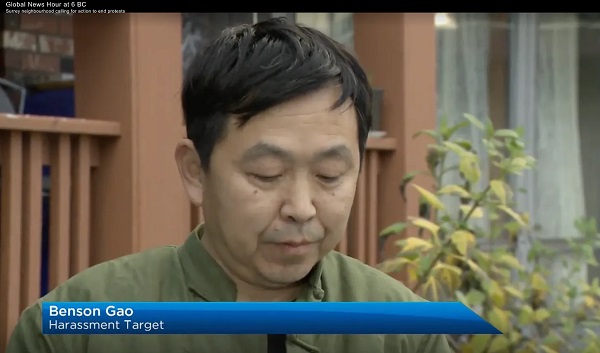International
Pope Francis has died aged 88
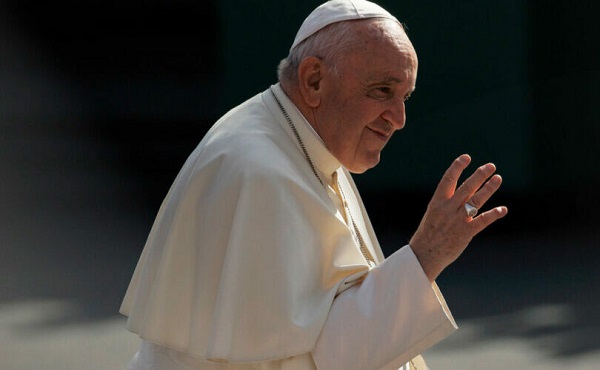
From LifeSiteNews
Pope Francis’ reign in the papal throne spanned more than a decade, and witnessed the spread of widespread confusion on numerous matters of the Catholic faith.
Pope Francis has died today, aged 88.
The Holy See Press Office announced the news, writing:
A short while ago, His Eminence Cardinal Farrell announced with sorrow the death of Pope Francis with these words:
“Dear brothers and sisters, it is with deep sorrow that I must announce the death of our Holy Father Francis.
At 7:35 this morning, the Bishop of Rome, Francis, returned to the Father’s house. His entire life was dedicated to the service of the Lord and His Church.
He taught us to live the values of the Gospel with fidelity, courage, and universal love, especially toward the poorest and most marginalized.
With immense gratitude for his example as a true disciple of the Lord Jesus, we commend the soul of Pope Francis to the infinite merciful love of the Triune God.”
Pope Francis’s health had been steadily declining in recent months. He had suffered persistent breathing problems through the winter and was admitted to Rome’s Gemelli hospital on February 14 for bronchitis but was then diagnosed with double pneumonia in what was first described as a “complex” then a “critical” medical scenario. He suffered a number of respiratory crises and failures and presented with symptoms of “mild” kidney failure during his hospitalization. Discharged back to the Vatican after 38-days, Francis began a 2-month convalescence as his doctors revealed he nearly lost his life twice in the spring hospitalization.
He was last in public on Easter Sunday to give the Urbi et Orbi blessing, but looked notably weak, being barely able to raise his arms and with a particularly strained voice.
The Argentinian prelate had led the Catholic Church as Pope since March 13, 2013. He emerged to the world as a surprise successor to Benedict XVI, following the German Pope’s shock resignation in February 2013.
Jorge Mario Bergoglio was ordained on December 13, 1969 and was raised to become Auxiliary Bishop of Buenos Aires in May 1992, before assuming control of the see in 1998. Created cardinal by Pope John Paul II in February 2001, he served as the vice-president and then president of the episcopal conference of Argentina from 2002 – 2011.
In the papal conclave following Benedict XVI’s resignation, Cardinal Bergoglio was elected to the Papal throne on March 13, 2013, at the age of 76.
Pope Francis: A bishop from ‘the ends of the earth’
Announced as the 266th Pope of the Catholic Church on March 13, 2013, Cardinal Jorge Mario Bergoglio was elected on just the second day of the conclave.
Citing concern for the poor as his reason, Bergoglio chose the new papal name of Francis in imitation of St. Francis of Assisi. Addressing the crowds in St. Peter’s Square on the evening of his ascent to the throne, Francis avoided using the term “Pope,” presenting himself instead as “bishop” of Rome. “You know that it was the duty of the Conclave to give Rome a Bishop. It seems that my brother Cardinals have gone to the ends of the earth to get one… but here we are… I thank you for your welcome. The diocesan community of Rome now has its Bishop.”
His appearance on the balcony of St. Peter’s was notable for its departure from tradition: gone were the Pope’s red shoes which symbolized martyrdom; gone were the Papal pectoral cross and ring, with Bergoglio choosing his own instead; gone also was the traditional red mozzetta.
He also dispensed with the usual order of a papal blessing, asking the assembled crowd to pray for him, before imparting a blessing.
The evening was a revelatory one, with many commentators already remarking on the new Pope’s disregard for customs.
He created over 140 cardinals in ten consistories through his reign, and issued well over 3,500 documents, texts or speeches. Among this number were 4 Encyclicals: Lumen Fidei, largely written by Pope Benedict and finished by Francis; Fratelli Tutti, which expounded a form of irreligious fraternity dubbed as “blasphemous”; Laudato Si’, which advocated for “climate change” measures and formed the basis for his future ecological writings and interventions; Dilexit Nos, on the Sacred Heart.
Pope Francis also penned 74 Motu Proprios, 92 Apostolic Letters, 7 Apostolic Exhortations, 20 Apostolic Constitutions, and one Papal Bull. Francis made over 40 official papal trips outside of Italy and visited 65 countries as of September 12, 2024.





Daily Caller
ALAN DERSHOWITZ: Can Trump Legally Send Troops Into Our Cities? The Answer Is ‘Wishy-Washy’
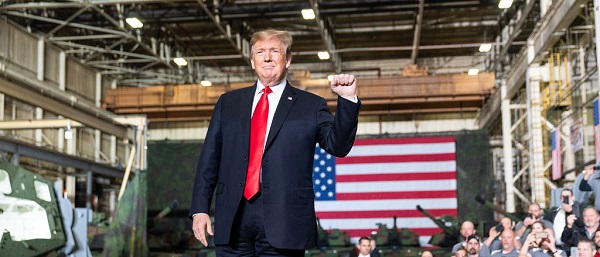

From the Daily Caller News Foundation
If I were still teaching a course on constitutional law, I would use President Donald Trump’s decision to send troops into cities as a classic example of an issue whose resolution is unpredictable. There are arguments on both sides, many of which are fact-specific and depend on constantly changing circumstances.
A few conclusions are fairly clear:
First, under Article 2 of the U.S. Constitution, the president clearly has the authority to send federal law enforcement officials to protect federal buildings or federal officials from danger. Moreover, the president gets to decide, subject to limited judicial review, whether such dangers exist. State and city officials cannot interfere with the proper exercise of such federal authority.
Dear Readers:
As a nonprofit, we are dependent on the generosity of our readers.
Please consider making a small donation of any amount here.
Thank you!
Second, and equally clear, is that if there is no federal interest that requires protection, the president has no authority to intrude on purely local matters, such as street crime. The 10th Amendment and various statutes leave local law enforcement entirely in the hands of the states.
Third, the president has greater authority over Washington, DC, even with the District of Columbia Home Rule Act of 1973, than he does over other cities.
Fourth, there are limited situations in which the president has authority, even if there is no direct federal interest in protecting a federal building or authorities. One such instance is an “insurrection.”
Yet the law is unclear as to a) the definition of an insurrection; b) who gets to decide whether an insurrection, however defined, is ongoing; and c) what is the proper role of the judiciary in reviewing a presidential decision that an insurrection is occurring.
The same is true of an invasion. This is somewhat easier to define, but there will be close cases, such as a dictator sending hordes of illegal immigrants to destabilize a nation.
How Do We Legally Define What’s Happening Now?
In a democracy, especially one with a system of checks and balances and a division of power such as ours, the question almost always comes down to who gets to decide? Our legal system recognizes the possibility ‒ indeed, the likelihood ‒ that whoever gets to make that decision may get it wrong.
So the issue becomes: Who has the right to be wrong? In most democracies, especially those with unitary parliamentary systems, the right to be wrong belongs to the elected branch of government ‒ namely, the legislature. At the federal level, that’s Congress, under Article 1 of the Constitution.
However, since the Supreme Court’s decision in Marbury v. Madison in 1803, all legislative decisions are subject to constitutional judicial review. Even a majority of the voters or their legislators are not empowered to violate the Constitution.
And if the Constitution is unclear, ambiguous or even inconsistent? I have a cartoon hanging in my office showing one of the framers saying to the others: “Just for fun, let’s make what is or isn’t constitutional kind of wishy-washy.”
Well, on the issue of presidential power to send troops into cities over the objection of local politicians, the Constitution is kind of “wishy-washy.” To paraphrase former Supreme Court Justice Potter Stewart, when he discussed hardcore pornography: “Perhaps I could never succeed in intelligibly (defining it), but I know it when I see it.”
The same may be said of an insurrection. It’s hard to define in advance with any degree of precision except at the extremes, but not so difficult to identify if one sees it.
The Legal Endgame Here Isn’t Clear, Either
The Civil War was an insurrection. Anti-Israel protests on campuses were not. But what about the violence in cities like Portland, where left-wing protesters burned cars and buildings and blocked access in 2024?
Some of these groups would love nothing more than to incite an insurrection, but they lack the power, at least at the moment, to garner sufficient support for anything broader than a violent demonstration or riot.
Does the president have to wait until these quixotic “insurrectionists” have garnered such support? Or can he take preventive steps that include sending in federal law enforcement officials? What about federal troops? Is that different?
These questions will eventually make their way to the Supreme Court, which is likely to try to defer broadly based and categorical answer as long as possible. In the meantime, district judges in cities across the country will rule against the president, except in cases involving protection of federal buildings, federal officials and the nation’s capital.
The president will appeal, and the appellate courts will likely split, depending on the particular circumstances of the cases.
“Wishy-washy” and “we’ll know it when we see it” are the best we are going to get in this complex situation.
Alan Dershowitz is professor emeritus at Harvard Law School and the author of “Get Trump,” “Guilt by Accusation” and “The Price of Principle.” This piece is republished from the Alan Dershowitz Newsletter.
Daily Caller
Democrats Explicitly Tell Spy Agencies, Military To Disobey Trump
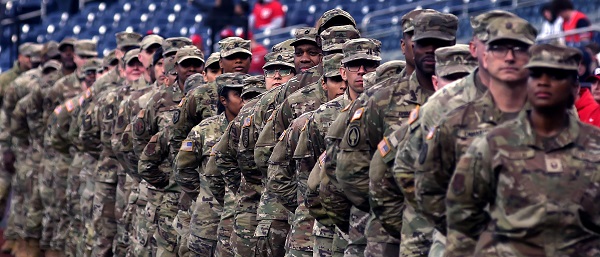

From the Daily Caller News Foundation
Democratic Michigan Sen. Elissa Slotkin posted a video to social media Tuesday morning in which she and five of her congressional colleagues called for the military and the intelligence community to “stand up” to President Donald Trump’s administration.
The half-dozen Democratic lawmakers who took part in the video titled, “Don’t give up the ship,” had all served as military or intelligence officers. In her X post of the video, Slotkin stated the lawmakers seek to “directly” tell service members and intelligence personnel that the “American people need you to stand up for our laws and our Constitution.”
“We know you are under enormous stress and pressure right now,” Slotkin, a former CIA officer, said in the video she appeared in alongside Democratic Arizona Sen. Mark Kelly, Democratic Pennsylvania Reps. Chris Deluzio and Chrissy Houlahan, Democratic New Hampshire Rep. Maggie Goodlander and Democratic Colorado Rep. Jason Crow.
“Americans trust their military,” said Houlahan, a former Air Force officer.
“But that trust is at risk,” added Deluzio, a former officer in the Navy.
“This administration is pitting our uniformed military and intelligence community professionals against American citizens,” Kelly, a former Navy officer, said in tandem with Crow, a former Army officer, and Slotkin.
WATCH:
“Our laws are clear. You can refuse illegal orders. You can refuse illegal orders. You must refuse illegal orders,” Kelly, Slotkin and Deluzio said later in the video.
“Like us, you all swore an oath to protect and defend this Constitution,” Kelly and Goodlander, a former naval intelligence officer who is married to Biden-era former national security adviser Jake Sullivan, charged military and intelligence personnel.
Deluzio and Crow claimed that “threats to our Constitution aren’t just coming from abroad, but from right here at home.”
The lawmakers added that they know that what they are urging is “hard” and that “it is a difficult time to be a public servant.”
“But whether you are serving in the CIA, the Army, our Navy, the Air Force, your vigilance is critical. And know that we have your back,” they continued, alternating lines. “Because now more than ever, the American people need you. We need you to stand up for our laws, our Constitution, and who we are as Americans.”
“Don’t give up, don’t give up, don’t give up, don’t give up the ship,” the Democrats concluded.
Article II, Section 2 of the Constitution states that the president is the commander-in-chief of the armed forces. The president is also in charge of intelligence agencies such as the FBI and CIA, by virtue of being head of the Executive Branch of the federal government — a responsibility laid out in Article II, Section 1.
“Don’t give up the ship” is a common phrase that dates back to the War of 1812 and were the last words uttered by Navy Captain James Lawrence before he succumbed to his gunshot wound on the USS Chesapeake.
-

 Alberta2 days ago
Alberta2 days agoAlberta Offers Enormous Advantages for AI Data Centres
-

 Alberta2 days ago
Alberta2 days agoNational Crisis Approaching Due To The Carney Government’s Centrally Planned Green Economy
-

 Alberta2 days ago
Alberta2 days agoCalgary mayor should retain ‘blanket rezoning’ for sake of Calgarian families
-

 Bruce Dowbiggin2 days ago
Bruce Dowbiggin2 days agoSports 50/50 Draws: Make Sure You Read The Small Print
-
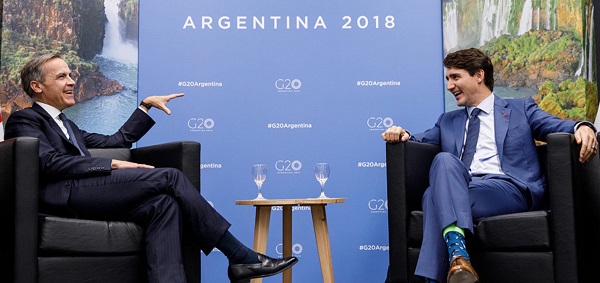
 Carbon Tax18 hours ago
Carbon Tax18 hours agoCarney fails to undo Trudeau’s devastating energy policies
-
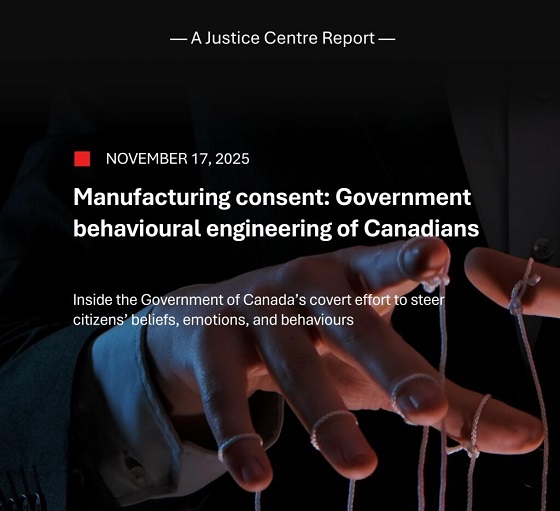
 COVID-192 days ago
COVID-192 days agoNew report warns Ottawa’s ‘nudge’ unit erodes democracy and public trust
-

 Agriculture1 day ago
Agriculture1 day agoFederal cabinet calls for Canadian bank used primarily by white farmers to be more diverse
-

 Censorship Industrial Complex2 days ago
Censorship Industrial Complex2 days agoQuebec City faces lawsuit after cancelling Christian event over “controversial” artist



